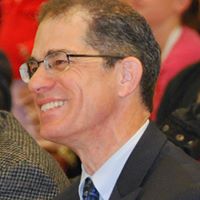Summer Programs
School may be out for the summer for most students and teachers, but no so for staff and students involved in July programs with the Ottawa Catholic School Board.
Some 2,500 students are enrolled in Reach Ahead and Make-Up courses at four high schools across the city - Holy Trinity, Immaculata, St. Patrick's, and St. Pius X. An interesting pilot occurring this summer is blended earning in some English and Career/Civics courses. I very much enjoyed visiting all for summer school sites and even had the opportunity to teach a lesson on Hamlet to an enthusiastic grade 12 Reach Ahead class at Holy Trinity!
There are also 1,300 or so elementary-age students this summer taking international languages classes at five sites: Notre Dame, St. Clare, St. Elizabeth, St. Gabriel, and St. Luke (Nepean). The most popular language this summer is Chinese Mandarin. During my visits to the sites in July, I also met students studying other languages such as Korean, Russian, Cantonese, Spanish, and Italian.
 |
| With Site Administrator Vitus Soo visiting International Languages summer classes at Notre Dame High School |
Thanks to a generous grant from the Ontario Ministry of Education, the Ottawa Catholic School Board's Focus on Youth program is able again this summer to employ 65 or so students between the ages of 16 and 18 as counselors at a variety of summer camps in the Ottawa area. As well, this grant has made it possible for 20 students to work as custodial assistants in our schools. I was very pleased to visit the summer camp programs run by the Britannia Woods Community House and the City of Ottawa in conjunction with the Michele Heights Community Centre and speak with the Focus on Youth students working there. St. Paul student Katarzyna Maciaszek beautifully summarized the benefits of Focus on Youth when she said to me, "It's amazing how much I have learned from working with the children. It's my way of paying it forward to the children - being a role model for them."
(2nd edition)
Author Michael J. Hill begins Step By Step to a Safer School with
a summary of Safe Schools legislation in Ontario – from Bill 81, the Safe Schools Act (2000) to Bill 13, the Accepting Schools Act (2012).
There are some valuable insights in the chapter on suspensions. For instance, Hill suggests that a teacher
submit an office referral form prior to sending a student to the office for
misconduct, and that the teacher indicate on the form the progressive
discipline interventions, strategies, supports, and consequences that the
he/she has previously used to address and improve the student’s conduct. He also suggests that caution be used on
suspension notices such that language that has Criminal Code connotations – ie.
assault and weapon – be avoided.
Likewise, a principal should ensure the legal status of a student is
clarified before using an in-school suspension or voluntary withdrawal of
students from school as a progressive disciplinary measure.
A good point made in the chapter on expulsions is that,
when conducting an investigation, a principal should keep a written record of
his/her attempts to speak with the student involved in the misconduct as well
as the student’s parents – in order to prove that the principal has observed
procedural fairness.
Other advice offered for conducting investigations
includes the following:
- Interview
victims and witnesses before interviewing students suspected of misconduct;
- Be
factual and non-judgmental in all written and electronic documentation
pertaining to students;
- School
officials should take pictures of any seized item or object prior to the police
removing them.
In the chapter Search
& Seizure, school officials are reminded that they have greater powers
of search than police since they need neither a search warrant nor parental
approval. However, they are cautioned
against conducting random locker or personal searches and advised to ensure
they have reasonable grounds before conducting any search.
Shelter-in-place, hold and secure, and lockdowns
are discussed in the chapter on emergency response procedures. One interesting suggestion the author makes
for these responses is to place pre-made signs on exit doors to signify the
type of emergency response in place at a school and how parents can obtain
additional information. When it comes
specifically to lockdowns, Hill points out that conducting just two lockdown
drills per school year (as required by regulation) may be insufficient for
students and staff to fully grasp what is required of them. As well, he emphasizes that lockdown
procedures should provide enough flexibility to allow adults to have some
autonomy in decision-making. Hill
recommends principals send a trespass advisory letter prior to sending a formal
trespass notice.
In a brief chapter on Youth Gangs, the author introduces
some new gang terminology, such as stacking
(hand signs used to signal gang activities such as imminent assaults) and netbanging (gang social media sites).
The book also contains several case studies, lengthy
appendices of safe schools legislation and policy statements, and a brief
glossary of terms.
Unfortunately, Step
By Step to a Safer School contains a number of typos and usage errors
that detract from its presentation. Some
examples include:
- Nor is incorrectly used
instead of or (and vice versa) in the
last two points on page 16;
- Section 206(1) is
incorrectly identified on page 19 as the part of the Education Act that lists the behaviours for which a suspension must
be considered;
- An
agreement error appears the bottom of page 41 (they is used to refer to The
student;
- The
word disinterest is misused on page
124.
These minor editing errors aside, the second edition of Step
By Step to a Safer School is an easy read and a good primer on school
safety for educational administrators.








